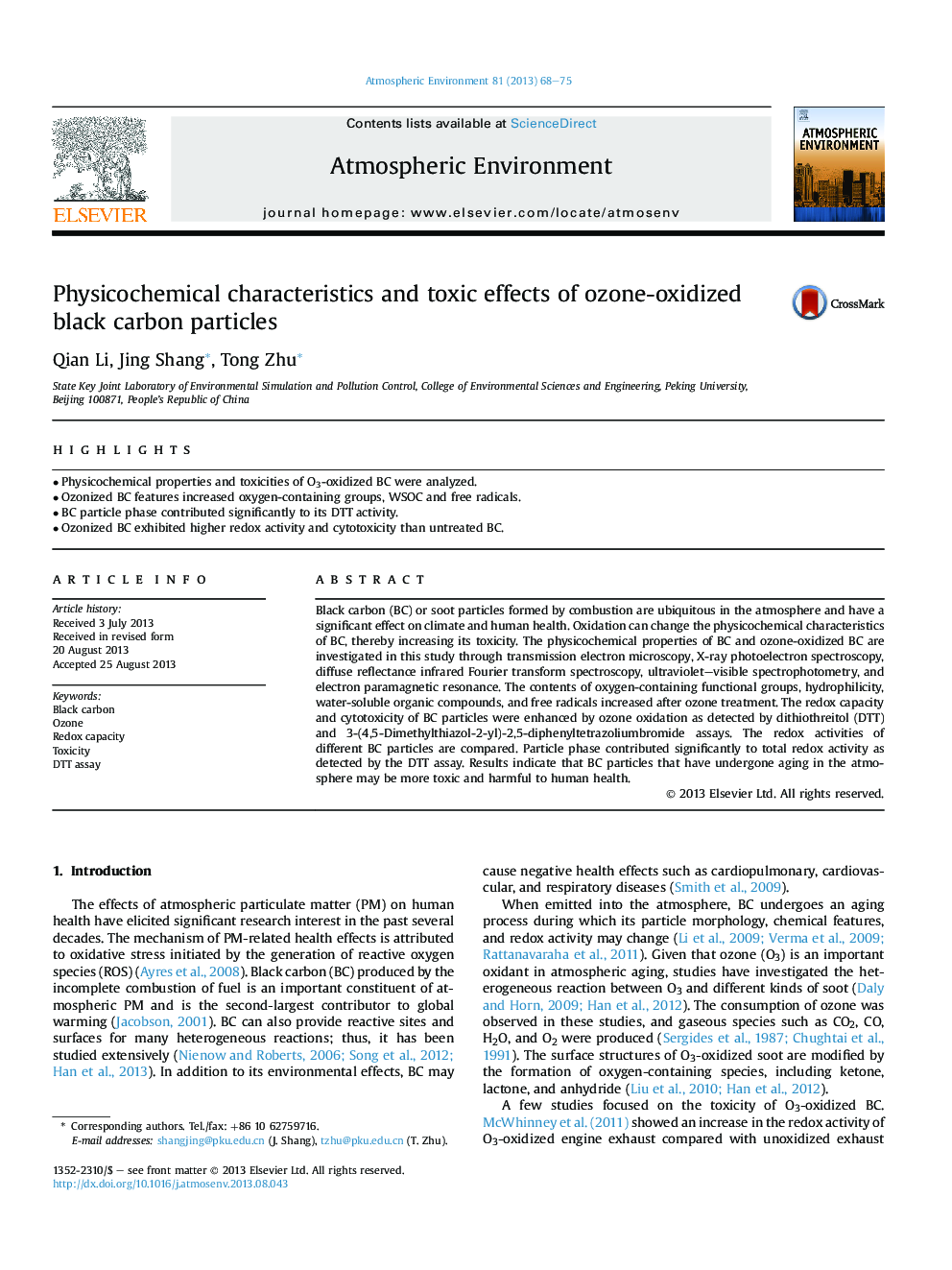| Article ID | Journal | Published Year | Pages | File Type |
|---|---|---|---|---|
| 6340382 | Atmospheric Environment | 2013 | 8 Pages |
Abstract
Black carbon (BC) or soot particles formed by combustion are ubiquitous in the atmosphere and have a significant effect on climate and human health. Oxidation can change the physicochemical characteristics of BC, thereby increasing its toxicity. The physicochemical properties of BC and ozone-oxidized BC are investigated in this study through transmission electron microscopy, X-ray photoelectron spectroscopy, diffuse reflectance infrared Fourier transform spectroscopy, ultraviolet-visible spectrophotometry, and electron paramagnetic resonance. The contents of oxygen-containing functional groups, hydrophilicity, water-soluble organic compounds, and free radicals increased after ozone treatment. The redox capacity and cytotoxicity of BC particles were enhanced by ozone oxidation as detected by dithiothreitol (DTT) and 3-(4,5-Dimethylthiazol-2-yl)-2,5-diphenyltetrazoliumbromide assays. The redox activities of different BC particles are compared. Particle phase contributed significantly to total redox activity as detected by the DTT assay. Results indicate that BC particles that have undergone aging in the atmosphere may be more toxic and harmful to human health.
Related Topics
Physical Sciences and Engineering
Earth and Planetary Sciences
Atmospheric Science
Authors
Qian Li, Jing Shang, Tong Zhu,
